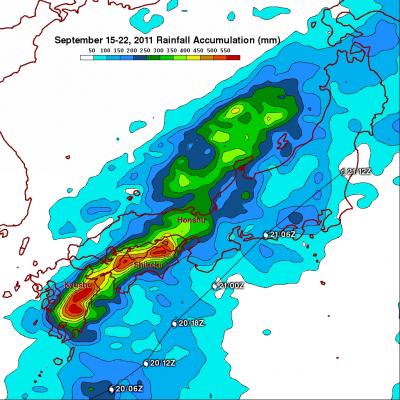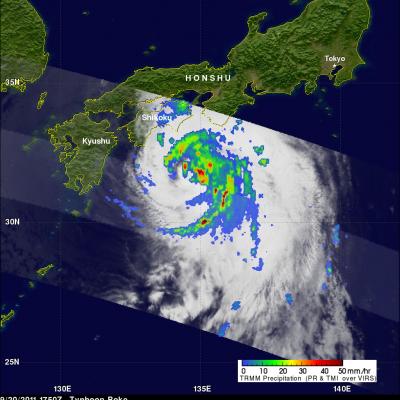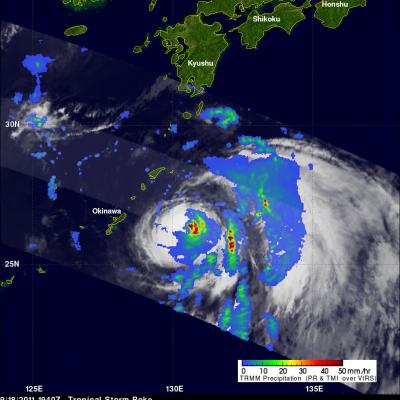Typhoon Roke Brings Heavy Rains to Japan
Typhoon Roke, which made landfall as a Category 1 typhoon along the southeast coast of Honshu near the city of Hamamatsu (about 200 km southwest of Tokyo), was responsible for bringing heavy rains and flooding to most of Japan. Heavy rains actually began effecting parts of southern Japan well before the cyclone neared the coast as tropical moisture from Roke streamed northward into a stalled out frontal boundary that was draped across southern Japan. Japan is also very mountainous, which can enhance the effect. The Tropical Rainfall Measuring Mission or TRMM satellite is used to measure




